Submitted by WA Contents
"I offer a publication machinery where somehow the things become more public" says Winy Maas
Netherlands Architecture News - Oct 19, 2017 - 10:49 17706 views
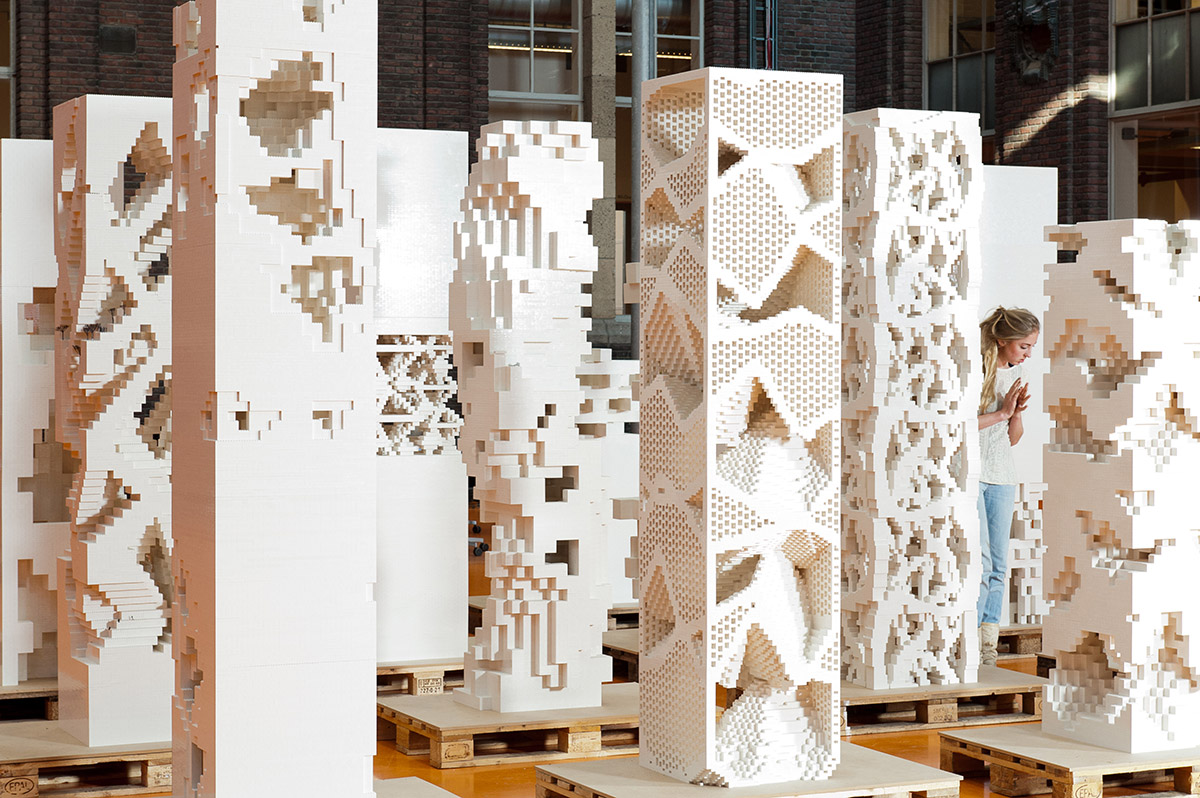
"The Why Factory offers a 'publication machinery' where somehow the things become more public and we don’t throw away all the work normally done in the universities. 95% of all the student works in all universities are not visible, and they are completely thrown away - they are not public and they are all individual," according to Dutch architect, urbanist, researcher Prof. Winy Maas, co-founder of MVRDV and founder of The Why Factory.
Winy Maas' incisive discourses and debates still continue to get reaction from the public and World Architecture Community readers on the typologic standardisation of public housing, or even, on the "sameness" of the new private housing estates across the world.

The Why Factory -T?F Orange Tribune: The Future City is Wide by The Why Factory. Image © Rob 't Hart
In the second part of World Architecture Community's exclusive interview published earlier this month, world-renowned Dutch architect also discussed the mission of The Why Factory (T?F) in detail for the first time. Maas gave clear insights of how his research-based institution, The Why Factory, has become an experimental model for worldwide explorations for the investigation of future cities, "by setting itself, not in a kind of enclosed individualism, but as part of a collective work."
"This is the collective part and ambition of The Why Factory. Some students may say: I want to be an individual starchitect and I don’t want to be part of a group work", then I can say: ok it’s fine, then you can go to another place," explained the architect.
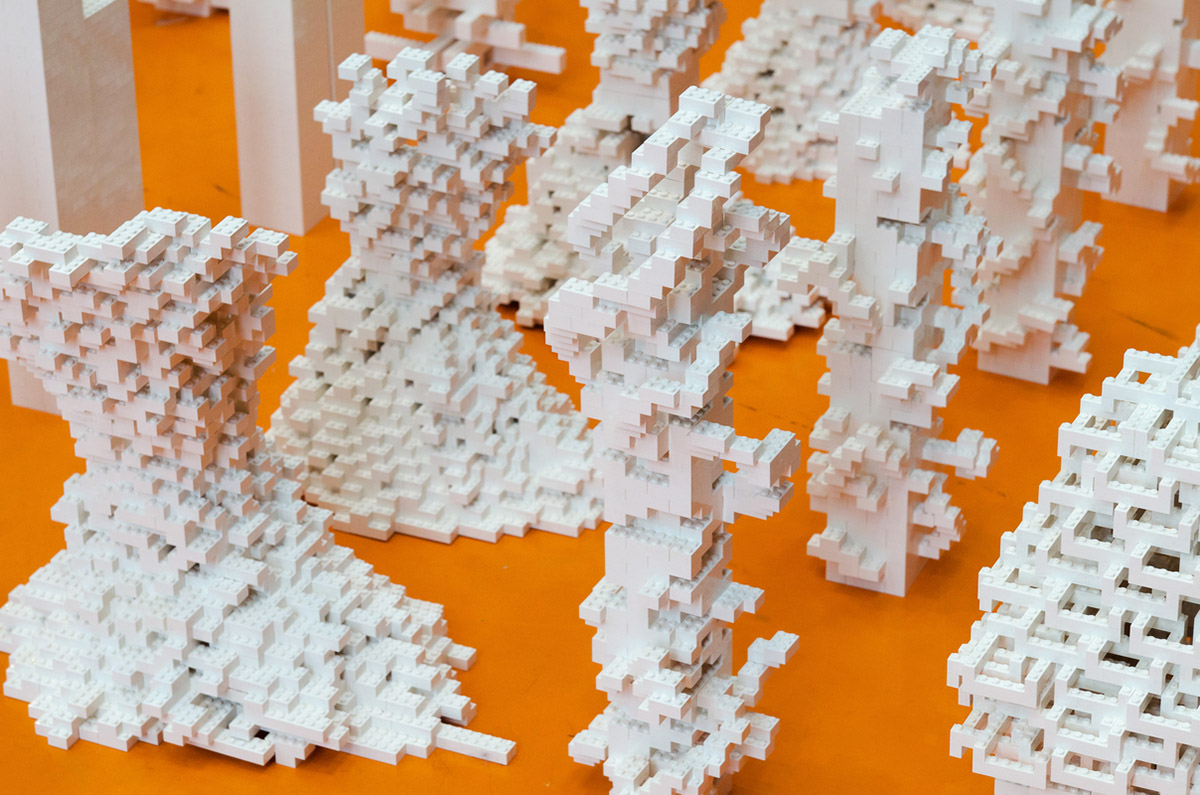
Porous City produces a particular response to our closed and introvert towers/blocks to show how towers can be open and mixed with urban life. The model show is composed of 676 white LEGO towers at a scale of 1:000 that are formally powerful, complex and expressive. Image © Frans Parthesius, The Why Factory/Delft University of Technology TU Delft
"I want to investigate Future Cities - that’s all - I want to construct them in buildings, studies and fantasies. I want to offer students a place where that kind of research can be done."
"But in this model you can add your own fascination, as all people are dfferent. Besides that, I am also modest as I know we can do only a limited amount of work," added Maas.
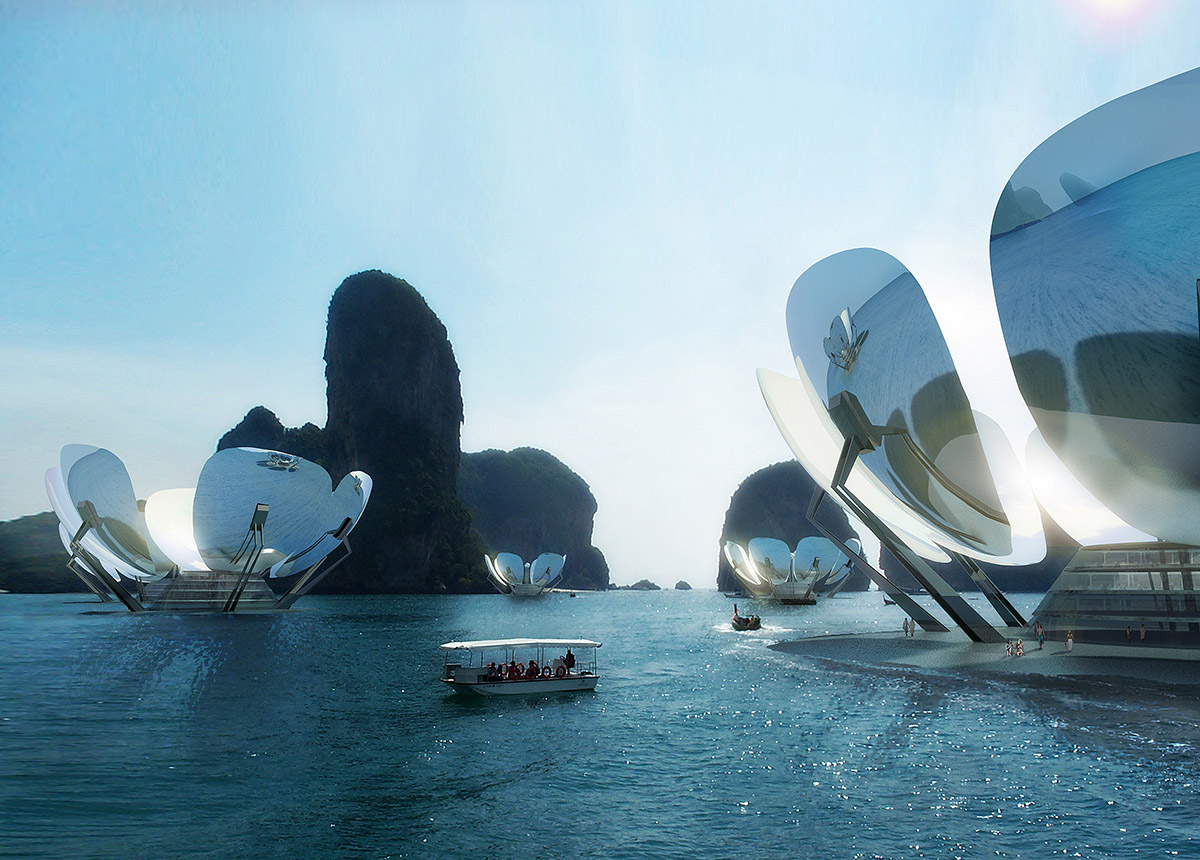
Green dream by The Why Factory. Image © The Why Factory/Delft University of Technology TU Delft
Maas also emphasized that he was getting reactions since he also used students in this experimental education model for a collective research. But, Maas argues that it is normal to include students on bigger research subjects, as it is explicitly seen in other areas as well.
"The Why Factory is maybe a model organization that can be applied more worldwide. We accept Master students to develop their aspirations on aspects of the future city. Some people are completely against that model because they think that this is 'using' students for a collective research. I defend that, as in other fields it is very normal to ask students to participate on bigger research subjects," said Maas.
"It allows them to go deeper and gives them an alternative educative models outside of the normal design education. And it offers credits to students and protects their own copy of rights. It offers a platform of making of books that make it possible that the studies, students and participants become also more public and present," he added.
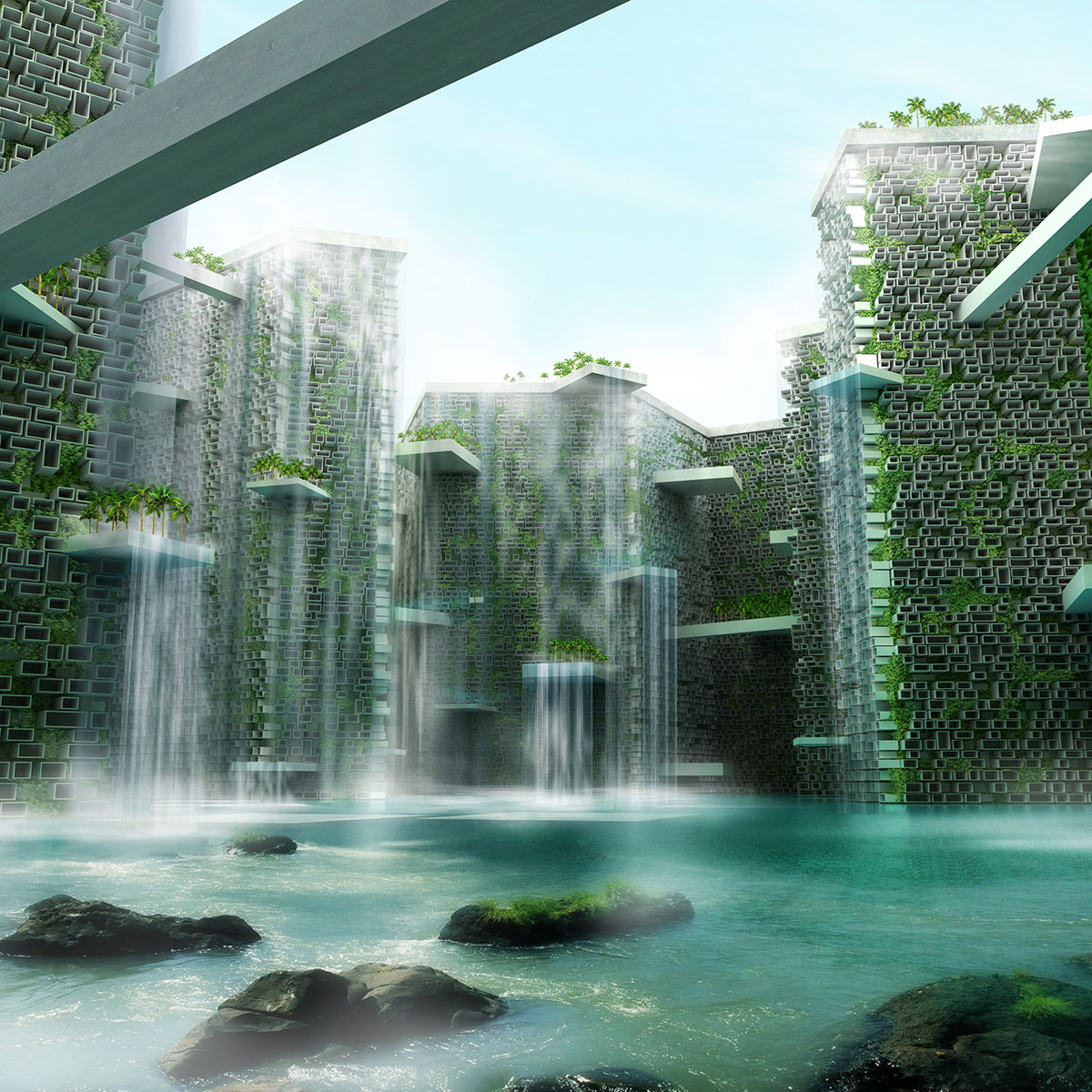
Absolute leisure by The Why Factory. Image © The Why Factory/Delft University of Technology TU Delft
The Why Factory was founded in 2008 and serves as a research institution and think-tank for the investigation of future cities within a covered courtyard at the Delft University of Technology, of which Maas is also a graduate. The institution accepts Master students from all over the world to create collective works and to be a part of collective research for "Future Cities".
The institution works with a data-driven experimental model, opening up possibilities for the development of future cities. Its outcomes generally result in the production of testable models, books, visualisations and new softwares, which are tested and presented in worldwide workshops, panel discussions and exhibitions.
Up to now, the productions of The Why Factory have been exhibited at various events, such as the Business of Design Week, Hong Kong, 2009, Foodprint Manifestation, Den Haag, 2009, Imaginarium, Berlin, 2010, Museum of Tomorrow, Taipei, 2011, The Total Museum of Contemporary Art, Seoul, 2012, Hamburg Museum, Hamburg, 2013, COAM-Madrid, 2016, Architekturgalerie, Munich, 2017. The Why Factory is now preparing to exhibit during Dutch Design Week 2017. The exhibition will then move on SpazioFMG, Milan, 2017.
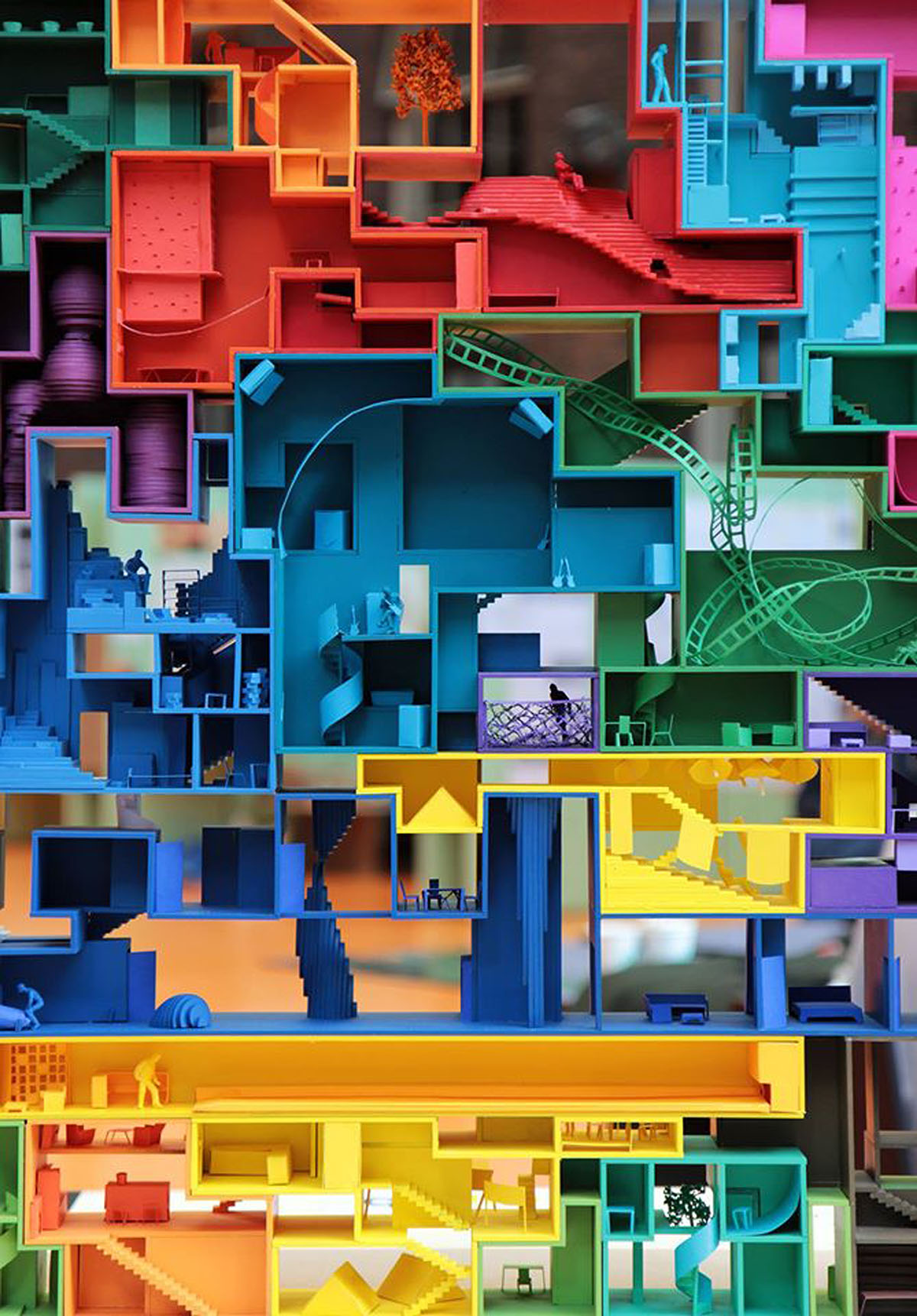
Egocity by The Why Factory. Image © The Why Factory/Delft University of Technology TU Delft
In addition to these, The Why Factory published a series of books up to now, covering different topics and nested hypotheses, as core part of The Why Factory's mission. The institution's tenth book titled "Copy Paste" has recently been released by nai010 publishers, which explores the tactical evolution of architecture and forms a new tool in understanding evolutionary parts of architecture and urbanism in the widest sense.
"I think The Why Factory is a model for worldwide explorations, if not beyond. The institution’s model is disseminated by our themes, by our studios in Delft and elsewhere. All of this is realized only through our researchers and our foundation. We accept Master students to make strong aspirations on aspects of the future city," explained acclaimed Dutch architect Winy Maas.
"But I am aware that the Why Factory also educates more and more people that will later in commercial practices or make PhD’s in other institutions. Their experience will help them to have more wider approach on buildings and a more precise approach on research. The sets of publications open up our files, it reveals the methods openly. In doing so, it wants to reduce the myths, and it wants to invite others."
"I think, it helps to claim on new innovation for the future city and it helps to claim to suggest new research agendas with some certain kind of industries or institutions," he added.
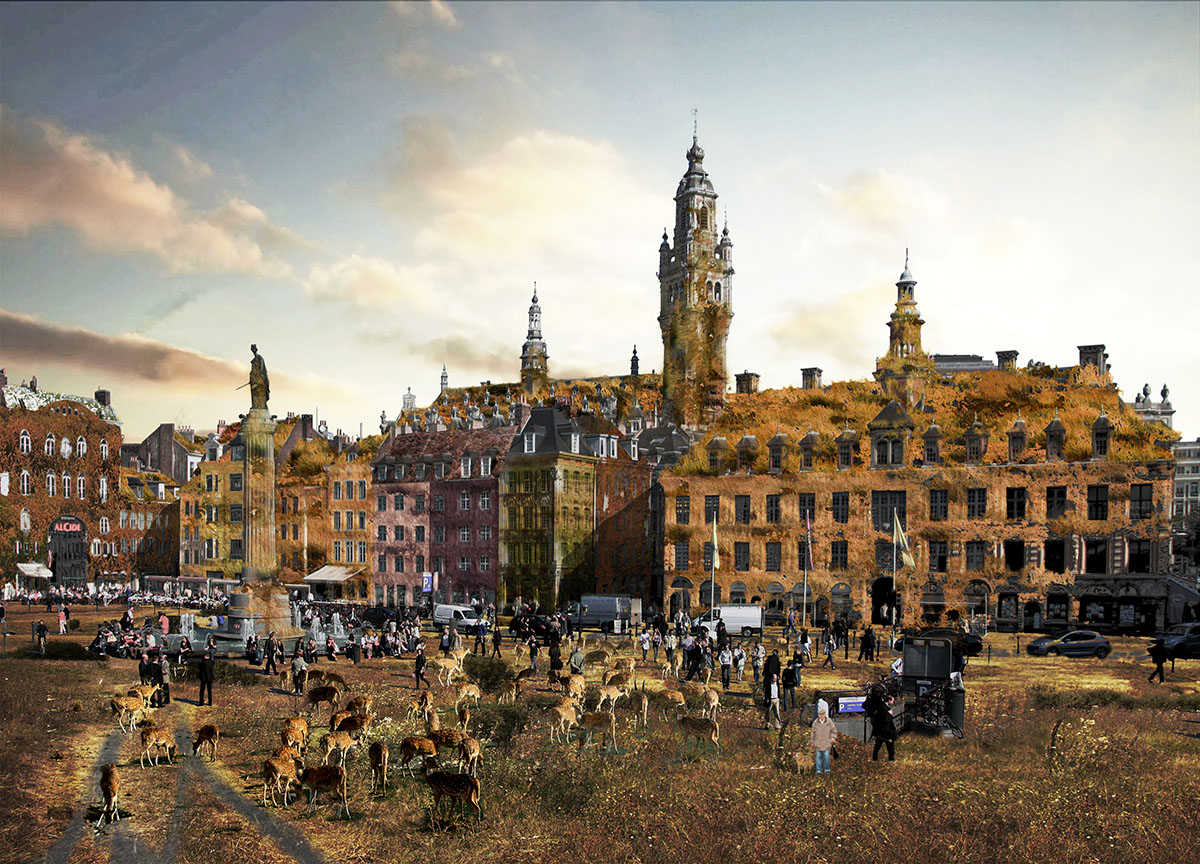
BiodiverCity project by The Why Factory. Image © The Why Factory/Delft University of Technology TU Delft
"I am aware that we could do much more when we would have more money and we could make more tests – like for the BiodiverCity project as we are developing: I dream in that case about prototypical material tests how that city would work, how animals can live in walls and on roofs. That would be so great."
"A new book comes out soon on this subject – and the book really produces some of the paradoxes that the students have studied. It will allow animals to participate in the next city for the future developments."
"But, research is not fast and there are not so many people that can do that so it takes time. I can say, this is just one lab that is concentrating on parts of the role of future cities, but actually there are many more. In the meantime, it allows us to do a quite wide range that has many components in it - technological and sociological, and it create ideas for new subjects," Maas added.
And last but not least, Maas briefly touched upon the problems of current architectural education in an exclusive interview with World Architecture Community. He said most of the universities do not focus on innovation and many departments at the universities are not integrated with each other to create a wider perspective.
"There are deficits in architecture education. Much of this type of education is about 'conformation', more than innovation," said Maas. "It will be wise to develop alternative tools within the educational system, so other models than let’s say this copy-cat or simulation school."
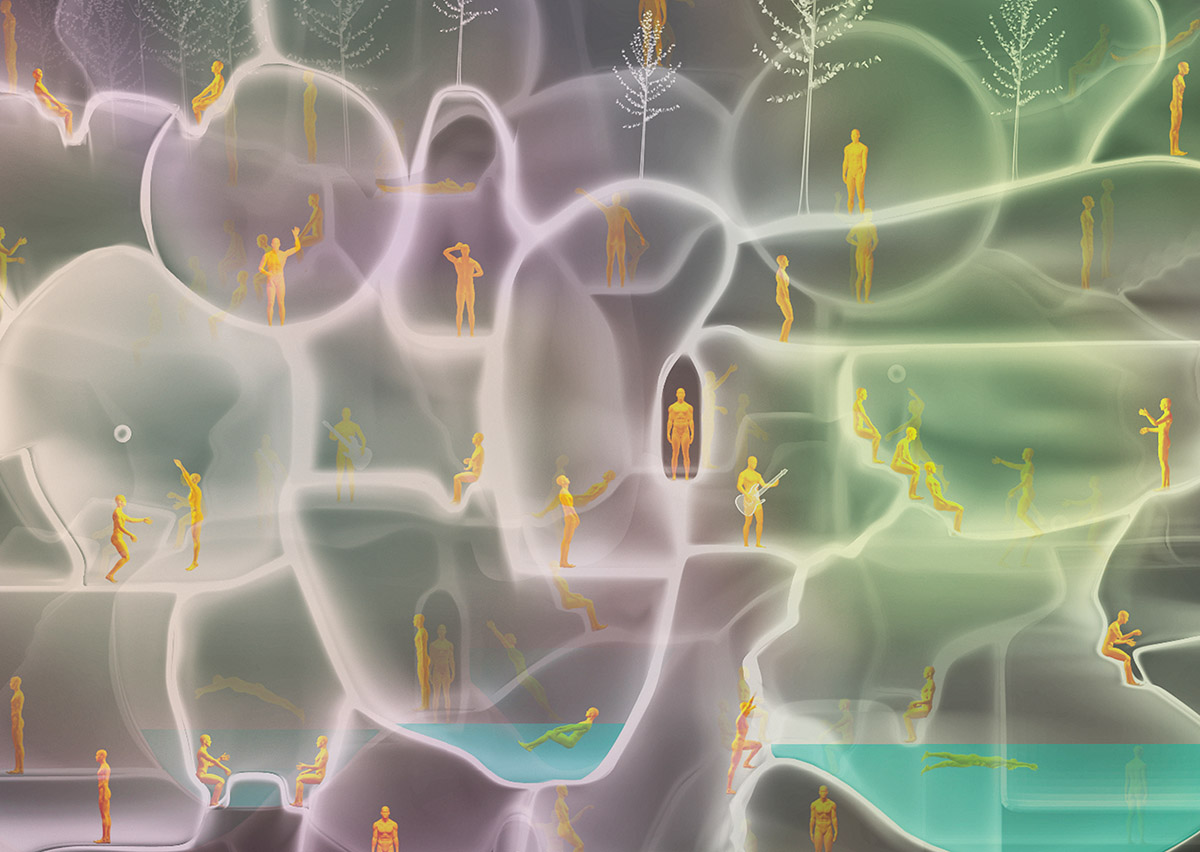
"Barba", one of books of The Why Factory, which focuses on the institution's research of nanotechnology in architecture. The Why Factory/Delft University of Technology TU Delft
He added: "For a long time, architectural education gained meaning to educate architects to express themselves by concentrating on their private design. And that have led to some habits that some teachers ask their students to design a building that they we were currently working on...I would call that the "simulation technique": what if you were me."
"And, there is a danger in that. Maybe, you are allowed to reflect this mirroring technique on the building, then master its designing but it lacks a wider perspective and a wider picture. It also neglects more innovative parts."
"I think I was educated in universities where innovation was the aim and that act stimulated me enormously. I hope, for a young generation, with their different backgrounds, that they can experience that also, as they will be the next generation of leaders of our planet, that need to face and work with this emerging evolutions, bigger thoughts, and innovation," Maas explained.
"So, there are more ways to study. It will be great if the planet is inhabited by universities that do something different in architectural education so that you can gain different perspectives from around. Some universities already do that as the Media Lab in MIT concentrating on technology."
"We are able to visit different parts of the world and places that take you to the next level of knowledge. The core part of obtaining that knowledge is that we need more depth, we need longer time to prove certain things, and we need more people. And that counts for every scientific research in the world," he concluded.
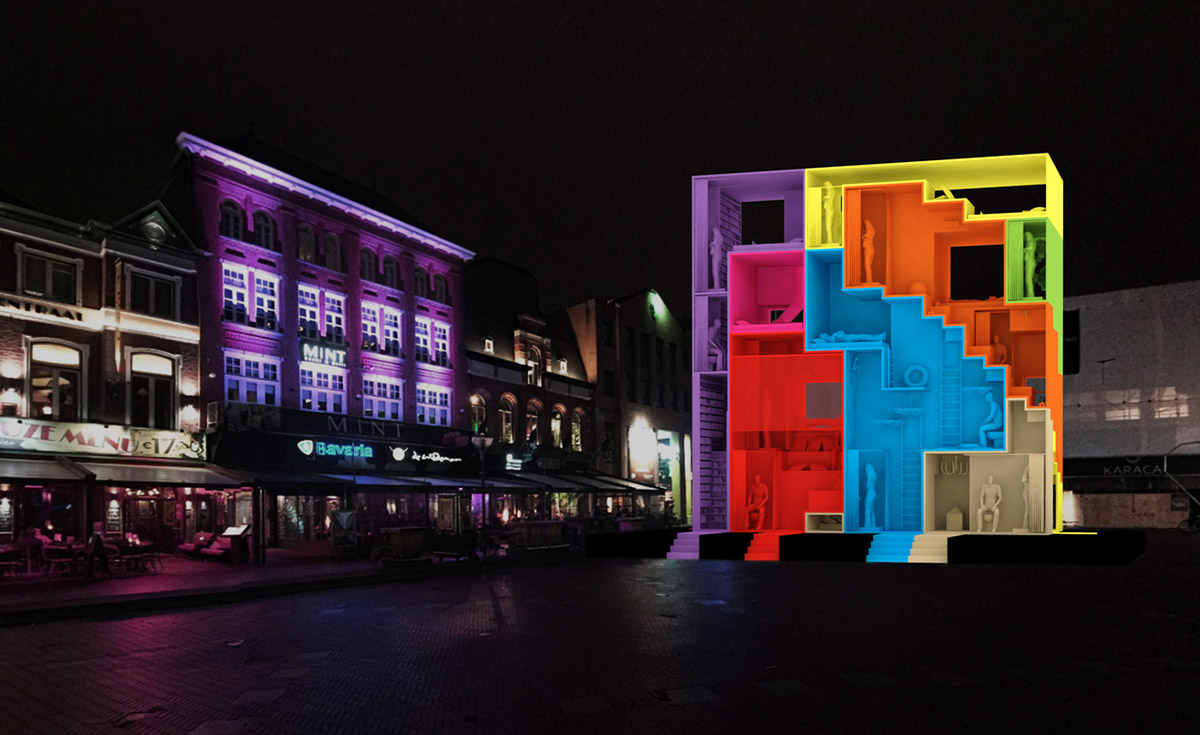
A giant (W)ego city installation is being installed in the Markt Square in Eindhoven. Image © The Why Factory
Winy Maas is the international ambassador of this year's edition of Dutch Design Week alongside designers Lonny van Ryswyck and Nadine Sterk of Atelier NL and Dezeen founder and editor-in-chief Marcus Fairs. Within the scope of the programme of Dutch Design Week, The Why Factory (TU Delft) and MVRDV will stage four different interventions in Eindhoven exploring Future City Products, in collaboration with Gemeente Eindhoven, Technical University Eindhoven, IIT Chicago, DDW.
"For my DDW ambassadorship, I want to focus on future city products. Products are the core of design, whilst the future is central to Dutch Design Week," said Winy Maas.
"The city is my core business so together, the focus is clear: future city products that will change our cities and our world. These visions are made by students, by participants, by designers," he added.
The four interventions will be comprised of a giant (W)ego city installation by The Why Factory displayed in the Markt Square in Eindhoven, a film shown at the entrance of the Klokgebouw, showing The Why Factory's illustrations and models for future cities, the presentation and launch of the new book "Copy Paste" by Winy Maas at the ABN AMRO Auditorium and the presentation in the Stadhuisplein Square of Eindhoven of the masterclass about the intensification of uses in Eindhoven’s city centre.
For a giant (W)ego city installation, "nine rooms are made from an idealistic but egoistic perspective including a panorama room, a stair room, a sky room and more. Users must negotiate with each other to create their ideal room in a limited space. How to defend your ideals? They start to circle around each other. And somehow, they become maybe even richer. With intrusions and negotiations, one has the feeling that there is something interesting happening next door as well. Why not visit? Ego becomes Wego. The installation shows a frozen moment of the interactive process," stated MVRDV regarding the installation, stated The Why Factory in a project description.
In The Future City is Wide installation, The Why Factory will present the audio-visual installation shown in the Hall 1of the Klokgebouw. "Sorted per agenda point, hundreds of ideas from students of the Why Factory illustrate and speculate on the wide of the possible future city. Yes, it is possible!", said The Why Factory.
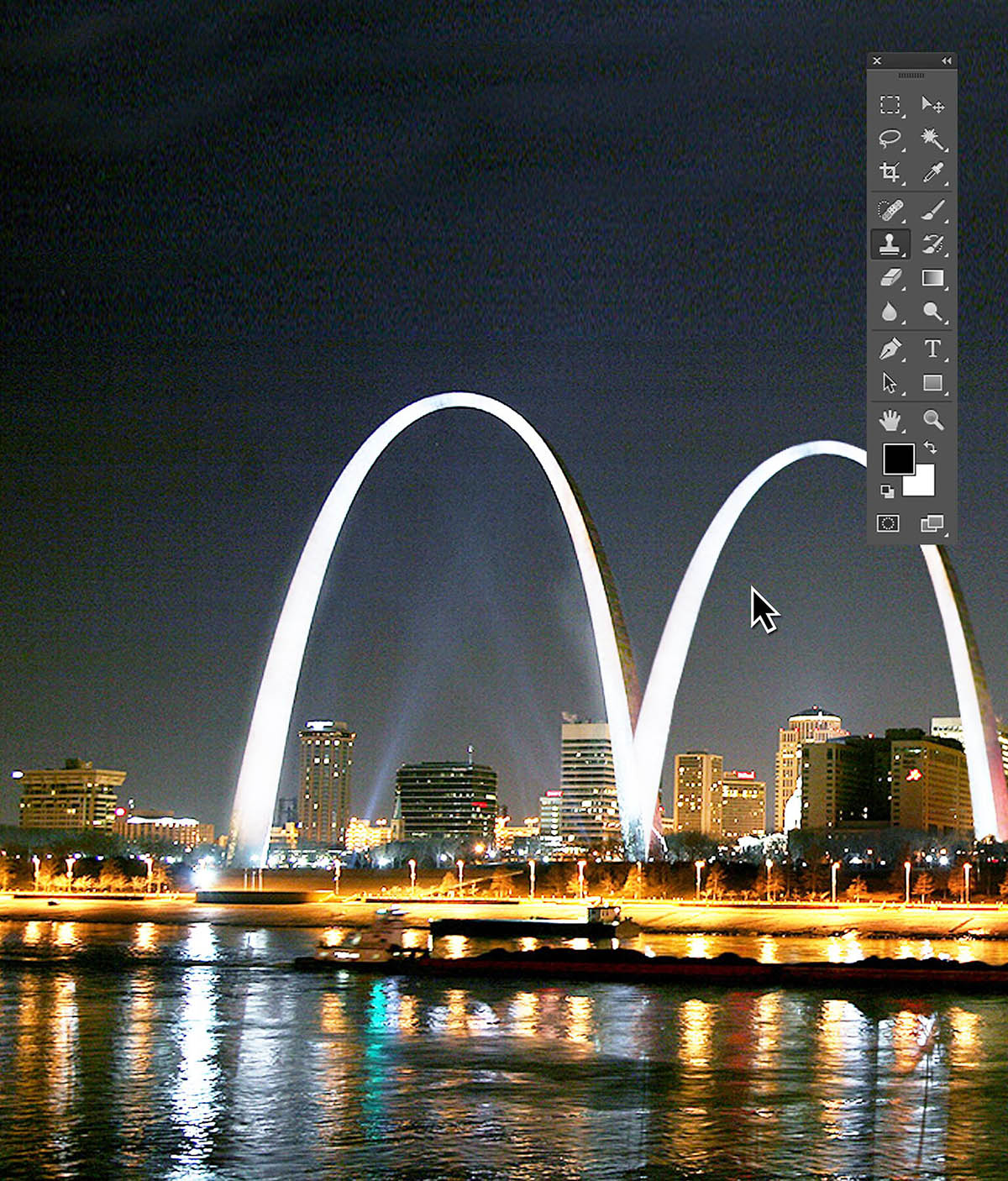
Copy Paste book poster image. Image © The Why Factory/Delft University of Technology TU Delft
In the third intervention, Winy Maas will present and give a lecture about the new book of The Why Factory - titled "Copy Paste" on October 24 (16:00-19:00) at the ABN AMRO Auditorium, Klokgebouw.
Winy Maas will present several videos that review the crucial aspects of the art of copying. Contents include a tutorial on how to copy with Photoshop, covering first the basic techniques of referencing. A review of Generator will trace forms backwards to their origin and forwards through endless iterations and unexpected outcomes. The resulting forms are far removed from the control of their authors, free from egotrips and copyrights.
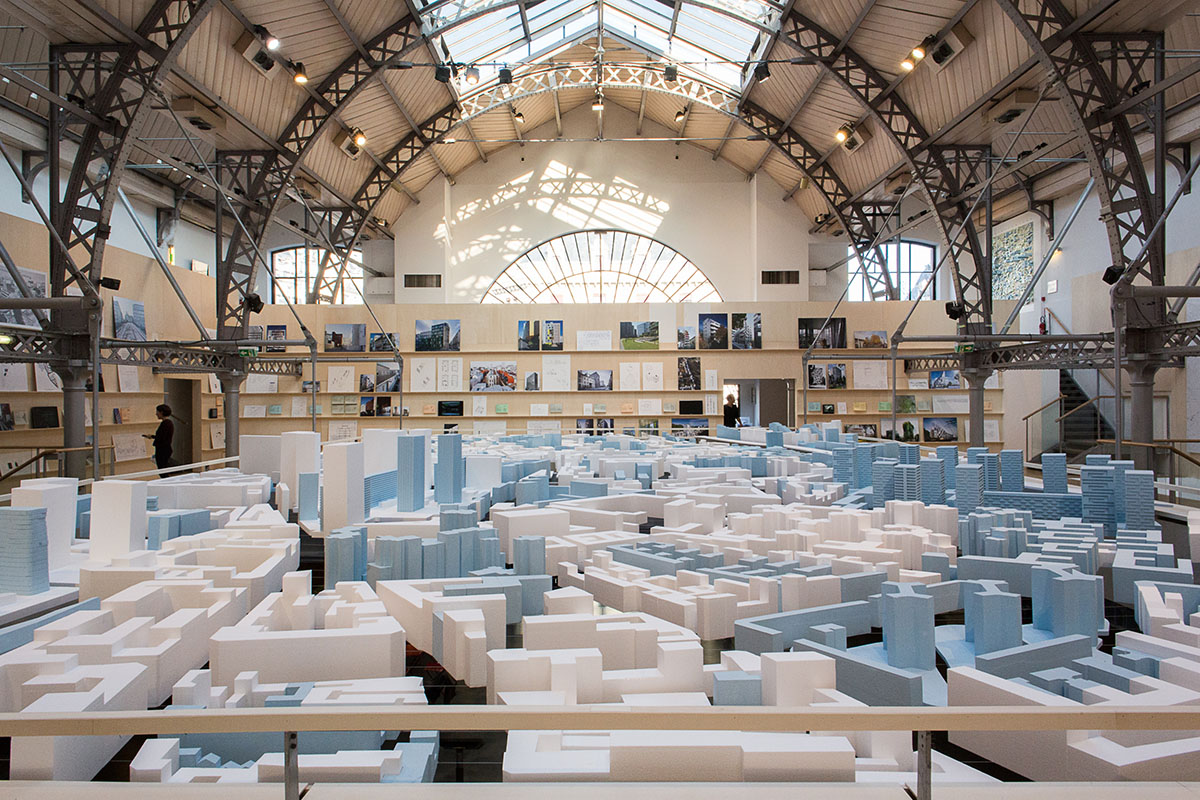
Paris Habitat exhibition at the Pavillon de Arsenal, curated by Javier Arpa. Image © Antoine Espinasseau / Pavillon de Arsenal
The last intervention will explore the intensification of uses in Eindhoven’s city centre. The work, undertaken by students from several universities shows a wide variety of towers that could be built in the centre of Eindhoven one day. Maas added: "My aim is to welcome citizens and discuss the future of their city."
Dutch Design Week 2017 kicks off this weekend and will take place between 21 - 29 October in Eindhoven, Netherlands. Winy Maas will also give a keynote address during Dutch Design Week on October 22 at Natlab in Eindhoven. Maas will be speaking in a panel discussion titled "Good Design for a Bad World: Terrorism" on October 21, initiated by Dezeen founder Marcus Fairs.
Top image © Frans Parthesius, The Why Factory/Delft University of Technology TU Delft
